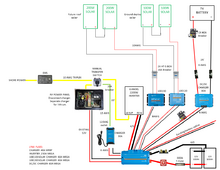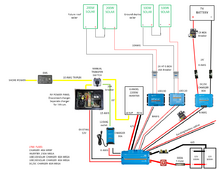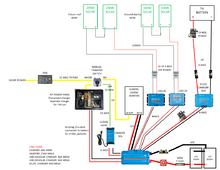I've received a great deal of help from this forum and thought I was near done with my diagram then started to question my plan, so tell me if I'm overthinking or have information overload. First I was going to disconnect my RV converter/charger and using the transfer switch, feed the AC side of the panel with shore power or the inverter, then feed the 12v side with the existing wires from the panel to the battery bank. A separate charger for lithium batteries would be wired to the shore side of the switch to only function when on shore power. All this meant I would leave the converter connected but disconnect the charger. Does this sound practical?
I also forgot about the wires currently connected to my battery, so now they need to go to the Lynx, but out of space and not sure how to manage that.
I also forgot about the wires currently connected to my battery, so now they need to go to the Lynx, but out of space and not sure how to manage that.







